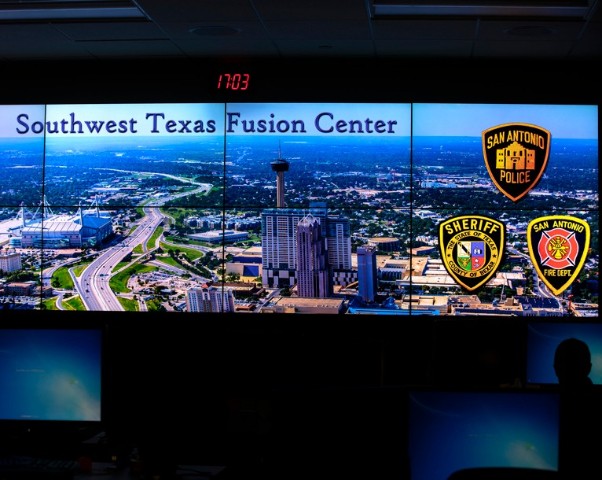FirstNet helps San Antonio develop a common operating picture for big events
Posted on April 19, 2019

Putting on a large-scale event brings its share of headaches for a city. That’s no different for us here in San Antonio. And hosting the college basketball championship here a year ago was definitely a challenge.
The Southwest Texas Fusion Center took on the role of providing intelligence support for the NCAA’s championship weekend in 2018.
And we couldn’t have done any of that without FirstNet and the tools that Esri was able to provide. Initially, some officers were reluctant to add another tool to their belts. But they were quick to adopt once they saw the benefits of FirstNet. They could take pictures, send text messages back and forth and see that common operating map.
A common operating picture
With a data connection we could depend on with FirstNet – and the Esri applications we deployed – we were able to develop a common operating picture. We could monitor our live data from police coming in through our computerized systems; the closed-circuit television cameras – and all the different aspects of the event. This included:
- The 911 calls as they came in and around the footprint
- Structures and buildings
- Our ambulances, EMS and specialized units
- All the different law enforcement agents – including our own officers, partners, and the Texas Department of Public Safety
And because it was a web-based environment, we could share that same view with all the command posts – including our mobile units; the command post at the convention center; the Fusion Center and fire command post.
The best thing about it is that everybody under the common operating platform could see their own assets moving around. And they could see what was impacting that asset.
Mitigating issues
This helped us mitigate issues as they came up. Lost children, gate crashers, ticket scalpers.
We dealt with about 280 different suspicious packages. Because of the clear bag policy, you couldn't drag your big purse or backpack into the event. So, people were discarding these or hiding them behind dumpsters or planters. And we had to deal with those bags because they were a potential threat, as we've seen across the country. Especially within the context of the Boston Marathon bombing, in which the bomber used a backpack to hide a bomb.
The technology gave us a little bit of an edge – and the situational awareness and assurance that if something bad were to happen, we were prepared for it.
For example, we had a gate crasher trying to come through the back hall of the concert event because it was full. We could track the officer’s movement on the map as he was addressing that gatecrasher. And once he found that gatecrasher we could broadcast his picture out to everybody.
Putting the tools to use
Going into our event, we couldn’t help but think about Las Vegas. In fact, the thing that brought the most terror to the collective was the outside concert event with high-rise buildings in the perimeter. This was just months after the shooting in Las Vegas at the Mandalay Bay and the open-air concert they had there. So, putting information in the hands of the folks in that environment was paramount for us.
All public safety agencies should be on FirstNet.
I can't see us doing the events we do and managing those events in the future without FirstNet. The throughput and the ability to communicate through that cellular device has become the standard now for San Antonio.
We're going to be deploying this over and over again in as many events that we have.
James Glass is the Deputy Director of the Southwest Texas Fusion Center which operates under the San Antonio Police Department. The Southwest Texas Fusion Center is a State of Texas and U.S. Department of Homeland Security recognized center, one of 79 throughout the country. He has 28 years of experience, the first eight with the Illinois State Police and the past 20 with SAPD. Director Glass holds a bachelor’s degree from University of Illinois at Springfield and a master’s in justice police from the University of Texas at San Antonio. He is also an adjunct professor with Texas A&M San Antonio.
